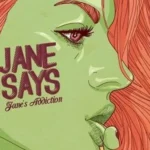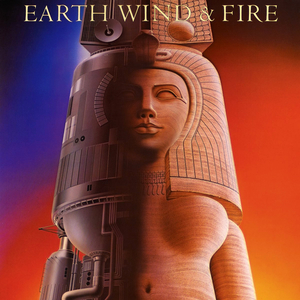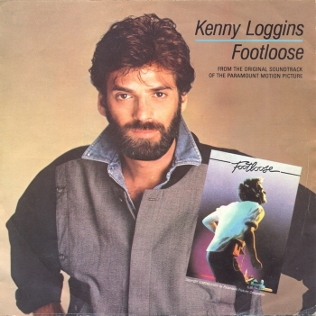 When Jane Says hit the airwaves in 1988, it didn’t sound like anything else happening in rock music. Jane’s Addiction, the Los Angeles band known for its chaotic live shows and fusion of funk, punk, and psychedelia, released a song that was, by contrast, achingly simple—two chords, a steel drum, and a confession that sounded too real to be fiction. It wasn’t a power ballad, and it wasn’t a rock anthem. It was raw, fragile, and beautiful in its vulnerability. “Jane Says” wasn’t just a song—it was a story, a character sketch, and an emotional lifeline for a generation caught between punk disillusionment and alternative awakening.
When Jane Says hit the airwaves in 1988, it didn’t sound like anything else happening in rock music. Jane’s Addiction, the Los Angeles band known for its chaotic live shows and fusion of funk, punk, and psychedelia, released a song that was, by contrast, achingly simple—two chords, a steel drum, and a confession that sounded too real to be fiction. It wasn’t a power ballad, and it wasn’t a rock anthem. It was raw, fragile, and beautiful in its vulnerability. “Jane Says” wasn’t just a song—it was a story, a character sketch, and an emotional lifeline for a generation caught between punk disillusionment and alternative awakening.
By the time Nothing’s Shocking dropped in 1988, the world was changing. Hair metal dominated MTV, punk had splintered into underground factions, and grunge was still gestating in Seattle clubs. Jane’s Addiction arrived like a band out of time—too weird for the mainstream, too stylish for the punk scene, and too soulful to be written off as art-rock. Yet “Jane Says” slipped through all those cracks and became the band’s calling card, a song that still stands as one of the purest pieces of honesty to come out of the late ’80s.
The Story Behind the Song
At its heart, “Jane Says” is about a real person. Jane Bainter was Perry Farrell’s former roommate and muse, a woman who lived on the fringes of L.A.’s bohemian scene. Farrell never hid that Jane was real—she was the inspiration not only for the song but also for the band’s name. She was someone trying to survive addiction, heartbreak, and the grind of city life with a mixture of hope and denial.
Farrell once said the song wasn’t meant to judge Jane, but to capture her essence—the contradictions, the dreams, the sadness. “Jane says she’s gonna quit doin’ it tomorrow,” he sings, his voice a mixture of empathy and resignation. It’s the same line countless friends of addicts have heard: the promise of a new start that always seems one day away.
What makes “Jane Says” powerful isn’t just the subject matter—it’s the delivery. The verses are conversational, almost like a diary entry set to music. There’s no chorus in the traditional sense, no rock bombast. Just Perry Farrell’s haunting voice, Dave Navarro’s delicate guitar arpeggios, and Stephen Perkins’ iconic steel drum rhythm, which gives the song its tropical melancholy.
The Sound of Simplicity
For a band known for complex, genre-bending arrangements, “Jane Says” is stripped down to the bare minimum. The song is built entirely around two chords—G and A. That’s it. But within that simplicity lies its genius. The repetition becomes hypnotic, a cycle that mirrors Jane’s own life: the same struggles, the same routines, the same hopes for change that never quite come.
Perry Farrell’s vocals float somewhere between speaking and singing, sometimes cracked, sometimes soaring. He doesn’t hide the imperfections; he leans into them. Every word sounds lived-in, like he’s recounting a memory that still hurts. Dave Navarro’s acoustic guitar provides a gentle backbone, its chiming tone both soothing and somber. Then there’s Perkins’ steel drum—a decision that could’ve sounded gimmicky in lesser hands but instead gives the song a shimmering sense of emotional contrast.
That steel drum is a masterstroke. It injects a bittersweet lightness into the sadness, like sunlight breaking through smog. It’s the sound of Los Angeles—gritty, beautiful, broken, and hopeful all at once.
A Moment of Truth in the Late ’80s
When “Jane Says” began circulating on college radio and MTV’s 120 Minutes, it felt like an antidote to the excess of the era. While bands like Poison and Bon Jovi sang about parties and heartbreak in glossy arenas, Jane’s Addiction brought something intimate and human. “Jane Says” wasn’t glamorous—it was real.
The song was originally recorded in 1987 for the band’s self-titled indie debut on Triple X Records, but the definitive version came a year later on Nothing’s Shocking. The second version was more polished yet still retained its emotional rawness. It quickly became one of the band’s most requested songs and a centerpiece of their live performances.
At a time when most L.A. acts were hiding behind spandex and smoke machines, Jane’s Addiction stripped everything away. “Jane Says” was about the struggle to survive when dreams collide with reality—a theme that hit home for anyone who had chased something in the city of angels and come up short.
Lyrical Honesty
“Jane Says” doesn’t rely on metaphor. It’s storytelling in its purest form. Jane talks about moving to Spain, about her abusive boyfriend Sergio, about pawning her things and getting clean. There’s no judgment—just observation. Perry Farrell paints her life in small, vivid strokes: “Jane says, I’m done with Sergio / He treats me like a rag doll.” It’s heartbreaking in its simplicity.
What makes it so haunting is that the listener senses the truth: Jane probably won’t leave. She probably won’t quit. The song captures the endless cycle of hope and despair that defines addiction. Yet, somehow, it’s not a downer. Farrell’s tone carries warmth and empathy. It’s as if he’s saying, “I see you. I get it.”
That emotional connection helped make “Jane Says” resonate far beyond the underground. It wasn’t a song about rebellion or fame—it was about survival. In the late ’80s, when rock was obsessed with image, this song dared to be personal.
The Live Experience
If you’ve ever seen Jane’s Addiction live, you know that “Jane Says” is the song everyone waits for. When Perry starts strumming that opening chord, the crowd immediately softens. The chaos of the set—Navarro’s fiery solos, Perkins’ tribal drumming, Farrell’s manic energy—suddenly melts into something tender. It’s the moment when the entire audience sways, sings along, and collectively exhales.
The live versions of “Jane Says” often stretch beyond the studio recording. Perry will linger on certain lines, drawing out the emotion. Navarro’s guitar shimmers like desert heat, and Perkins’ steel drum floats above the mix like a heartbeat. It’s not a showstopper—it’s a moment of shared vulnerability.
When the band reunited for tours in the 2000s and 2010s, “Jane Says” remained the emotional centerpiece. Fans who had grown up with the song sang it back as if it were scripture—a reminder of who they were, and maybe who they’d survived being.
Why It Still Matters
More than three decades after its release, “Jane Says” still feels relevant. Addiction, self-destruction, the longing for escape—those themes haven’t gone away. If anything, they’ve only become more visible. But what sets the song apart is its compassion. It doesn’t sensationalize pain; it humanizes it.
You can hear echoes of “Jane Says” in countless later artists—Smashing Pumpkins, Nirvana, Pearl Jam, even acoustic acts like Elliott Smith and Beck. It showed that rock could be raw without being loud, emotional without being melodramatic. It helped bridge the gap between punk authenticity and the introspection that would define ’90s alternative music.
The song also stands as a snapshot of a specific time and place: Los Angeles in the late ’80s. It’s not the L.A. of glitz and glamour—it’s the backstreets, the rundown apartments, the dreamers and drifters trying to make it work. “Jane Says” is their anthem.
The Duality of Light and Shadow
One of the most fascinating aspects of “Jane Says” is how it balances pain with beauty. The melody is sweet, the rhythm almost tropical, yet the lyrics tell a story of sadness and struggle. That duality is what makes it unforgettable. It’s like watching someone smile through tears.
Even Perry Farrell’s voice embodies that contrast. He sings with both innocence and weariness, like someone who’s seen too much but still believes in something better. It’s that glimmer of hope—however faint—that gives the song its emotional punch.
There’s also something timeless about its structure. The two-chord repetition, the conversational lyrics, the minimal arrangement—all of it feels elemental. You could strip away everything else, and “Jane Says” would still work around a campfire with just an acoustic guitar.
Jane’s Legacy
Jane Bainter herself has spoken about the song over the years. She’s acknowledged that it’s her story, and she’s expressed gratitude that people connected to it. Her life, like the song, was filled with ups and downs, but she remains an indelible part of rock history.
And for Jane’s Addiction, “Jane Says” became their anchor. As the band experimented with bigger sounds on later albums like Ritual de lo Habitual and Strays, they never lost touch with the emotional honesty that “Jane Says” embodied. It’s the song that keeps them grounded—a reminder of where they started.
Closing Thoughts
There’s a reason “Jane Says” has endured for nearly four decades. It’s not just a song—it’s a piece of emotional truth captured in sound. Written in 1988, during one of rock’s most artificial eras, it dared to be real. It showed that simplicity could be powerful, that empathy could rock just as hard as distortion.
For Perry Farrell and Jane’s Addiction, “Jane Says” remains their most human statement. It’s a song about broken people trying to heal, about dreams that fade but never quite die. It’s tender, tragic, and somehow hopeful all at once.
And when that steel drum chimes in and Perry sings, “Jane says, I’m gonna kick tomorrow,” you still find yourself believing her—if only for a moment. That’s the magic of “Jane Says.” It’s not about whether she ever did. It’s about the fragile beauty of believing she could.


